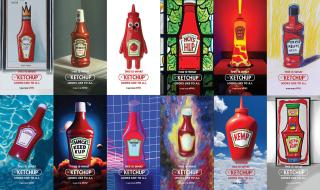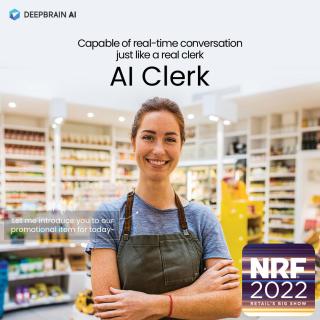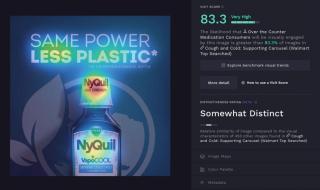Are you a bit befuddled or even alarmedby the avalanche of headlines about artificial intelligence (AI) the past 10 months? You’re not alone. Most people — if they’ve thought about AI at all — assumed it was just another behind-the-scenes technology slowly getting smarter alongside our smartphones, connected cars and talking coffee makers.
After all, AI has been around since the 1950s, albeit mostly running amok in movies like “2001: A Space Odyssey” and “Westworld.” In commerce marketing, AI has been running quite smoothly. U.K.-based Juniper Research reports that in the retail space alone, 325,000 companies worldwide have adopted some form of A.I. since 2019. There are lots of variations of AI already operating out there that you might recognize as:
• “Natural language processing,” which is used to run customer-service chatbots and even kiosks that employ “deep-fakes” of store clerks.
• “Computer-vision,” a technology that can analyze a customer’s living spaces to visualize furniture purchases or your facial features to show how makeup might look.
• “Predictive analytics,” which drive the programmatic-buying and effectiveness-monitoring of digital ads.
• “Spatial” software, which can crunch location data to follow shopper movements in every store aisle or throughout a mall.
• “Machine learning,” which can detect and drill into highly elusive factors like shifting customer sentiment to predict buying patterns or monitor online pricing in real time.
But in November 2022, AI stepped into the news-cycle spotlight with the launch of a “generative artificial intelligence” (GenAI) tool called “ChatGPT.” Released by research lab OpenAI, ChatGPT is a game-changer times two:
• It uses algorithms and large language models in novel ways, so that it can produce content in the form of text, images, audio and video.
• This amazing capability was packaged as a simple-to-use productivity app that was being made available for everyday use (or at least test drives) by everybody.
NOTE: Don’t confuse generative AI with A.G.I. (artificial general intelligence). A.G.I. is still science fiction, a hypothetical level of AI that surpasses anything humans can do. Depending on whom you ask, A.G.I. will take years, possibly centuries, or may never be achievable at all.
Built on OpenAI’s neural network, ChatGPT (the GPT meaning “Generative Pre-trained Transformer”) harnesses the power of GenAI, a technology that (very, very basically) works this way: After being given an appropriate prompt, GenAI can predict the next word or pixel in a series, and when programmed correctly, it can “intelligently” produce “new” content. The ChatGPT app has been trained to do a whole host of common tasks like summarizing documents, answering questions, translating languages or generating code.
The effect of all of this is to change our relationship with AI. No one expects a marketing executive to write all the complex source code needed to run a chatbot or monitor online pricing. But in the brave new world opened up by ChatGPT, suddenly we’re all expected to be a lot more “hands on” with this technology.
A New Gold Rush
Within days of OpenAI’s announcement, judging by keyword search data, ChatGPT became a household word. Just as quickly, Microsoft (via its Bing search engine), Google (Bard) and Amazon rolled out their own adaptations. Suddenly, by building off of GenAI platforms, an array of creativity and productivity tools came online in something of a software developer’s gold rush. According to Crunchbase News data, this year 15% of all startup funding has gone to AI-focused companies — so much so that now venture capitalist investors are complaining that they’re overrun with companies suddenly “powered by AI.”
Every rose has its thorns, however. Before you could say “AP Physics 1,” kids began turning in AI-scribbled term papers. On May 30, hundreds of scientists and tech CEOs signed a statement saying AI poses a risk equal to pandemics and nuclear war. And if that’s not scary enough for you: Forrester Research predicts that AI could displace as many as 7% of all U.S. workers by 2025, while Goldman Sachs says two-thirds of jobs are now exposed to automation.
After a rash of alarmist headlines ensued, Scott Galloway, professor of marketing at NYU, reframed the threat: “AI is not going to take your job, but someone who understands AI is.” It’s just a tool, he says, but concedes that if you’re a subpar writer or a middling lawyer cranking out fill-in-the-blank leases all day, consider yourself on notice.
“If you’re a thoughtful person who’s creative, this doesn’t make you obsolete,” Galloway says. “It just makes mediocre people obsolete.”
That’s comforting, but it’s hard for copywriters and commercial artists to be comfortable with some of the sweeping claims being made these days. In March, Coca-Cola launched a first-of-its-kind AI platform (built by OpenAI and Bain & Company) that offered its creative brand assets to fans for “AI-powered experimentation” — in effect, crowd-sourcing creative for placement on digital billboards in New York and London.
Heinz did something similar months earlier, offering ketchup image prompts to fans, creating “the first-ever ad campaign with visuals generated entirely by AI.” Then on May 28, WPP announced that it was partnering with chipmaker Nvidia to create a GenAI platform that will enable the agency’s creative teams to produce ad campaigns “more efficiently and at scale.”
Getting Hands-On
“This technology is here to stay, but integration into workflows is still in its infancy stage,” says Adam Colasanto, head of services at Vizit, a Boston-based visual analytics company. “We’re seeing the ‘technology adoption curve’ play out in front of our eyes. Innovations like ChatGPT have made AI more commonplace and accessible and have helped to remove the fear of the unknown, making it safe to experiment with low table stakes and a freemium model. But brands are very much still learning how and where to integrate within their business units.”
It seems inevitable that your ability to master GenAI will determine whether it’ll be a helpful co-worker or just bossing you around. If you haven’t already, go online (chat.openai.com) or to your smartphone’s app store and start playing around. Once you’re comfortable with the basics, look online for more specialized apps but don’t be overwhelmed. “This is a test-and-learn phase with so many tools coming out, it seems, every week,” says Todd Hassenfelt, eCommerce Director, Growth Strategy & Planning, at Colgate-Palmolive.
Some of the GenAI tools Hassenfelt has gravitated to include: Perplexity, Boomy, Synthesia, Gamma, Runway Gen-2, Recast and Wordtune. But don’t get hung up on any one tool right away, he says, adding: “It’s all about seeing which tools have the potential to help solve problems for you or your business.”
Nick Jones of OMNI Marketing Solutions says he uses Copy.ai almost every day. Other tools he suggests playing with — most are free or have free trial periods — include MidJourney, Codeformer, Resumeworded, Looka.com and QuillBot. “But I think my favorites so far are Beautiful.ai, a presentation design system, and Otter.ai, which takes notes in video meetings. What’s particularly clever is that Otter provides a summary and organizes meeting notes into discrete sections. It somehow just ‘knows’ when you shift topics.”
Colasanto says right now is the perfect time to immerse yourself in AI because it’s still a level playing field. He suggests taking free courses via Google, looking for product demos and then signing up for beta access.
Tools for Commerce
Predicting exactly how AI will impact commerce marketing is still anyone’s guess. But Colgate’s Hassenfelt sees three areas that brands should be working on right away:
• Improving the digital shelf with product-detail page enhancements, at scale. Focus on titles, bullet points, product descriptions and eventually images.
• Doing competitor and SWOT analyses using well-crafted prompts on GenAI tools. For example, you can run a “PDF summarizer” app on an earnings call transcript and other publicly available information.
• Similarly, a team can do brand value proposition assess-ments using well-crafted prompts and current data tools.
Jones says that some of the “less sexy” AI apps — website and e-commerce testing tools — could have the biggest impact: “Think about prompt-based testing where, once you have a master set of prompts for what to look for, instead of a human doing hundreds of hours of excruciatingly dull click-by-click testing, a bot can do it in seconds.” He suggests examining GoTestPro, which the app-maker claims can cut testing costs by 70% and recommends fixes for any found bugs.
In the longer run, experts agree that we’re likely to see full-scale automation of AI solutions, the creation of new roles and processes within existing business units and integration into workflows. “There’ll be end-to-end automation of the entire e-commerce ecosystem,” says Vizit’s Colasanto. It will start with the “development of brand identity, copy and content creation for ads or product development pages, the syndication and management of products to respective channels, and the measurement of important KPIs — all managed through artificial intelligence.”
Hassenfelt thinks AI will also become an essential management tool. ChatGPT-like tools, for example, could improve the speed and quality of the employee onboarding process. By using AI apps that examine workflow management, leaders can assess where teams are inefficient and how to improve those gaps. Finally, an AI tool that automatically summarizes meetings could identify who contributes the most profitable ideas, an assessment that would loom large in performance reviews.
Watchouts
Colasanto warns that as it becomes easier to create art, ad copy or even simulate a brand’s “voice,” it will be harder to know what’s fake or misrepresented. Constructs will need to be put in place and industry-wide rigor established to protect AI’s legitimacy.
Then there’s the issue of bad results, which Hassenfelt calls “Degenerative AI,” and others have dubbed, AI’s “hallucination problem.” At least some GenAI content is “created” by less-than-rigorously grabbing information off the internet. In May, a skeptical Wired magazine editor in charge of testing and reviewing tech products asked ChatGPT, Bard and Bing Chat to do her job and recommend headphones. The results seemed reasonably reliable until the Google Bard AI oddly asserted: “I have also used a few different pairs of workout headphones myself.”
Hassenfelt believes that some apps, such as product image creation for brands, have been overhyped a bit. “GenAI still struggles with putting words correctly on images, especially brand names. There are some outliers that have found ways, but it’s not a simple process so far. And while language translation is definitely helpful, some of the GenAI produced videos on LinkedIn exaggerate the quality of videos that can be produced by a single prompt.”
Keerthi Vedantam, a reporter at Crunchbase News, recently warned that some GenAI startups don’t actually have their own proprietary language models or data sets; they’re simply placing an intuitive interface on top of another company’s technology.
“If using these tools for work, be sure to stay extremely close to your legal and IT teams on which are approved for use,” Hassenfelt warns. “Does your organization have a list of approved tools, the costs, a link to the terms of service, the departments most likely to use them and easy-to-understand descriptions? Are employees clear on what information is proprietary so they do not input it into an open-source tool? Is the company’s crisis-PR team ready for any deep-fake situations? And don’t rely on just having big workshop-type meetings to manage all of this, because they tend not to have much depth to them.”
Bottom line: “Companies have to find the right balance of managing the risks of GenAI,” he says, “without stifling the many opportunities it offers if used in a responsible way.”

AI in Action
In March, Coca-Cola launched a first-of-its-kind AI platform filled with brand assets for “AI-powered experimentation.” Members of the public who came up with the best ideas saw them placed on digital billboards in New York and London.

In 2022, Heinz lent ketchup image prompts to fans using DALL-E who, in turn, helped create “the first-ever ad campaign with visuals generated entirely by AI.”

ChatGPT’s cultural impact was immediately felt, far and wide. This ad by a Belgian agency, Impact, went up in June to attract new construction workers.

AI is often used to run customer-service chatbots, but the advent of “deep-fakes” is raising concerns about brand-messaging control.

Vizit’s generative-audience AI simulates the preference and biases for imagery of specific cohorts of shoppers, enabling creative teams to tailor content effectively.
AI Tools
A collection of GenAI tools that may be of interest to marketers. Most have more functionality than the brief descriptions (below) can cover, so view them as just a narrow, rough guide. Similarly, these apps are categorized here just for easy reference, but most blur those lines as well.
CONTENT CREATION
- Anyword, https://anyword.com Analyzes copy from websites, ads, social media and learns the voice.
- Boomy AI, https://boomy.com Empowered by generative music, create original songs "in seconds."
- Clickable, https://www.clickable.so "Generates ads in seconds... all marketing channels, ad formats and sizes are supported."
- Copy.ai, https://www.copy.ai Writes blog posts, ad, sales and ecommerce copy, product descriptions and social media content.
- Copysmith, https://copysmith.ai AI content generator designed for marketing and eCommerce teams.
- Hypotenuse https://www.hypotenuse.ai AI content generator from ideation to co-creating campaigns.
- Jasper, https://www.jasper.ai AI that can be trained on a specific style of writing so it generates content that’s on-brand.
- Omneky, https://www.omneky.com AI that generates rapid iterations of ads.
- Runway Gen-2, https://research.runwayml.com/gen2 A multi-modal AI system that generates videos from text, images or video clips.
- Surfer, https://surferseo.com An AI platform for keyword research, content creation, optimization and SEO growth management.
- Synthesia, https://www.synthesia.io Creates videos with 140 AI avatars; turns text into speech in more than 120 languages.
- Vizit, https://www.vizit.com A visual brand performance platform. Uses patented AI that lets users measure and optimize images to best motivate shoppers to view and buy products.
IMAGE GENERATION
- Codeformer, https://huggingface.co/spaces/sczhou/CodeFormer A face restoration algorithm for old photos or AI-generated faces.
- DALL·E 2, https://openai.com/dall-e-2 Creates original, realistic images from a natural language text descriptions, and can combine concepts, attributes, and styles.
- Illustroke, https://illustroke.com AI design tool for vector illustrations such as logos and icons
- Looka, https://looka.com AI-powered platform to design a logo.
- Midjourney, https://www.midjourney.com Creates images based on text prompts. Stopped offering free trial after system was used to produce fake images.
- neural.love, https://neural.love A relatively simple AI art generator with a built-in prompt menu.
- Stable Diffusion, https://stablediffusionweb.com A latent text-to-image "diffusion" model capable of generating photo-realistic images given a text input.
- Typeface, https://www.typeface.ai AI platform generates personalized, visual brand content within existing workflows.
MANAGEMENT
- Peppertype, https://www.peppercontent.io AI-powered platform brings content, data and marketing team together on a single dashboard.
NOTE-TAKING
- Mem, https://get.mem.ai An AI "centralized knowledge assistant" that imports notes, syncs email and calendars, etc. to serves as a "centralized knowledge assistant."
RESEARCH
- genei, https://www.genei.io AI-powered summarization and keyword extraction from PDFs and webpages.
- Perplexity,https://www.perplexity.ai An AI-powered search engine and chatbot that provides information such as such as FAQs, step-by-step instructions, definitions, etc.
SLIDE DECKS AND PRESENTATIONS
- beautiful.ai, https://www.beautiful.ai Creates professional presentations in minutes using smart slides built with AI-assisted design.
- Gamma, https://gamma.app Creates presentations, decks, documents and webpages using an AI generator
TESTING
- GoTestPro, https://www.gotestpro.com A user-friendly automation platform that enables continuous testing across various applications and technologies.
TEXT ENHANCEMENT
- Frase, https://www.frase.io AI writer that claims to ceate content that ranks on Google.
- GrammarlyGo, https://www.grammarly.com/grammarlygo Compose, ideate, rewrite, and reply with an AI co-creator informed by your context and goals.
- Hemingway, https://hemingwayapp.com “Like a spellchecker, but for style.”
- QuillBot, https://quillbot.com An online “paraphraser” rephrases text with the appropriate vocabulary, tone, and style.
- Resumeworded, https://resumeworded.com AI-powered platform gives tailored feedback on resumes and LinkedIn profiles.
- Wordtune, https://www.wordtune.com AI re-writing tool that understands context and semantics.
- Writesonic, https://writesonic.com Said to create SEO-optimized and "plagiarism-free" content for blogs, ads and emails.
TRANSCRIPTION
- Contenda, https://contenda.co Said to turn any video (conference talk, interview, demo, etc.) into written content.
- Otter.ai, https://otter.ai Records and automatically transcribes in-person and virtual meetings from favorite devices and applications.
- Recast, https://www.letsrecast.ai Turns articles into easy-to-understand audio conversations and summaries.
GenAI Experts Worth Following
- Oskar Kaszubski & Chris Perry at firstmovr.com offer free virtual events.
- BWG Strategy’s podcast “Digital Deep Dive with Aaron Conant” tackled GenAI’s impact on CPG and consumers early on.
- Ian Beacraft is a Futurist with Signal & Cipher who tracks the “technologies of tomorrow.” Follow on LinkedIn.
- The "Behind the Numbers" podcast at listennotes.com discusses different aspects of GenAI every week.
- Alex Velinov, CTO at Tag Digital, provides consistent insights on Generative AI use cases and tools. Follow on LinkedIn.
- Russ Dieringer at Stratably.com helps CPGs narrow the education gaps.
- Isabella (Izzy) Bedoya is an "AI Powered Marketing Strategist." Follow on LinkedIn.



